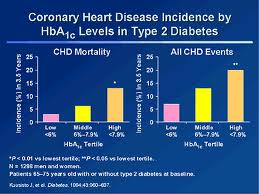Notably, the American Association of Clinical Chemistry (AACC) and American Diabetes Association (ADA) announced new diabetes testing recommendations. The document is entitled: “Guidelines and recommendations for laboratory analysis in the diagnosis and management of diabetes mellitus.” It is directed mainly at laboratory physicians and clinicians treating diabetes. David B. Sacks, MBChB, chief of the clinical chemistry service at the National Institutes of Health (NIH), Bethesda, Maryland, and co-authors stated the following: “The guidance is focussed on the practical aspects of care in order to assist with decisions regarding the use or interpretation of laboratory tests while screening, diagnosing, or monitoring patients with diabetes.”
Continuous glucose monitoring
It is important to realize that since 2011 new technologies regarding blood glucose monitoring have come out. Another key point is that continuous glucose monitoring (CGM) is a new method to monitor blood glucose. This device attaches to the upper arm and a very fine needle punctures the skin. The device stays there for 14 days. Using blue tooth technology, you can then record your continuous sugar levels in relation to your meal intakes with your iPhone.
This blog contains more information regarding continuous glucose monitoring:
Here is the target population for the use of CGM:
- teens and adults with type 1 diabetes
- children with diabetes
- pregnant women with type 1 diabetes
- adults with type 2 diabetes taking insulin
Test accuracy
Co-author M. Sue Kirkman, MD is from the University of North Carolina, Chapel Hill. She mentioned that the accuracy of blood tests for patients with diabetes is not always reliable. She said: “We do a lot of testing in screening, diagnosis, and monitoring of diabetes and its complications, yet for many clinicians we think that any result we get – or that a patient gets from home testing – is perfect. We often don’t think about the accuracy or precision of some tests, things that might interfere with the result, intra-individual variation of the test, or how one test may compare to a test of higher accuracy.” She also added that blood samples when not properly processed can have inaccurate blood sugar levels in them (blood sugars too high or too low).
Initial diagnostic diabetes tests
In the past the initial diabetes test included either an A1C level, a fasting glucose, or an oral glucose tolerance test. But Dr. Kirkman noted: “There is large intra-individual variation of fasting glucose and even larger for 2-hour glucose on the oral glucose tolerance test…This means if you do the test one week and then repeat it the next day or a week later, the results will be quite different. This is a reason why confirmation of an abnormal test is important. Yet many times this isn’t done.”
Strong recommendations based on high research evidence
- Measure fasting glucose in venous blood to establish the diagnosis of diabetes. The diagnostic cut-offs for diabetes are more than 7.0 mmol/L (or more than 126 mg/dL).
- The guidelines recommend frequent blood glucose monitoring for patients with diabetes who are on insulin therapy. Those patients who are on multiple daily injections or insulin pump therapy, but are not using CGM.
- Frequent blood glucose monitoring is recommended for all people with diabetes treated with intensive insulin regimens. This involves multiple daily injections or insulin pump therapy, but not using CGM.
Further comments
- There is a new recommendation that patients whose diabetes is under control by diet and oral hypoglycemic pills alone no longer need routine blood tests.
- The American Diabetes Association (ADA) recommends that the treatment goal is that the A1C should be less than 7% (less than 53 mmol/mol). The proviso is that this is achievable without causing hypoglycemic attacks.
- The physician should do annual testing for albuminuria 5 years after diagnosis of type 1 diabetes. At the time of diagnosing type 2 diabetes albumin in the urine is tested regardless of the treatment modality.
Conclusion
Recently the American Association of Clinical Chemistry (AACC) and the American Diabetes Association (ADA) announced new guidelines for the diagnosis of diabetes. These guidelines contain new recommendations regarding the testing of blood sugar, hemoglobin A1C and continuous glucose monitoring. It depends on the severity of the diabetes. In some patients their diabetes is under good control by diet and oral hypoglycemic pills alone. They no longer need to do glucose monitoring. But other patients with diabetes without good control need to do glucose monitoring and regular A1C testing. Some patients even have to do continuous glucose monitoring. The goal is to bring the A1C to less than 7% (less than 53 mmol/mol) to prevent complications from diabetes. These consist of diabetic neuropathy, diabetic retinopathy, diabetic nephropathy and vascular complications.








